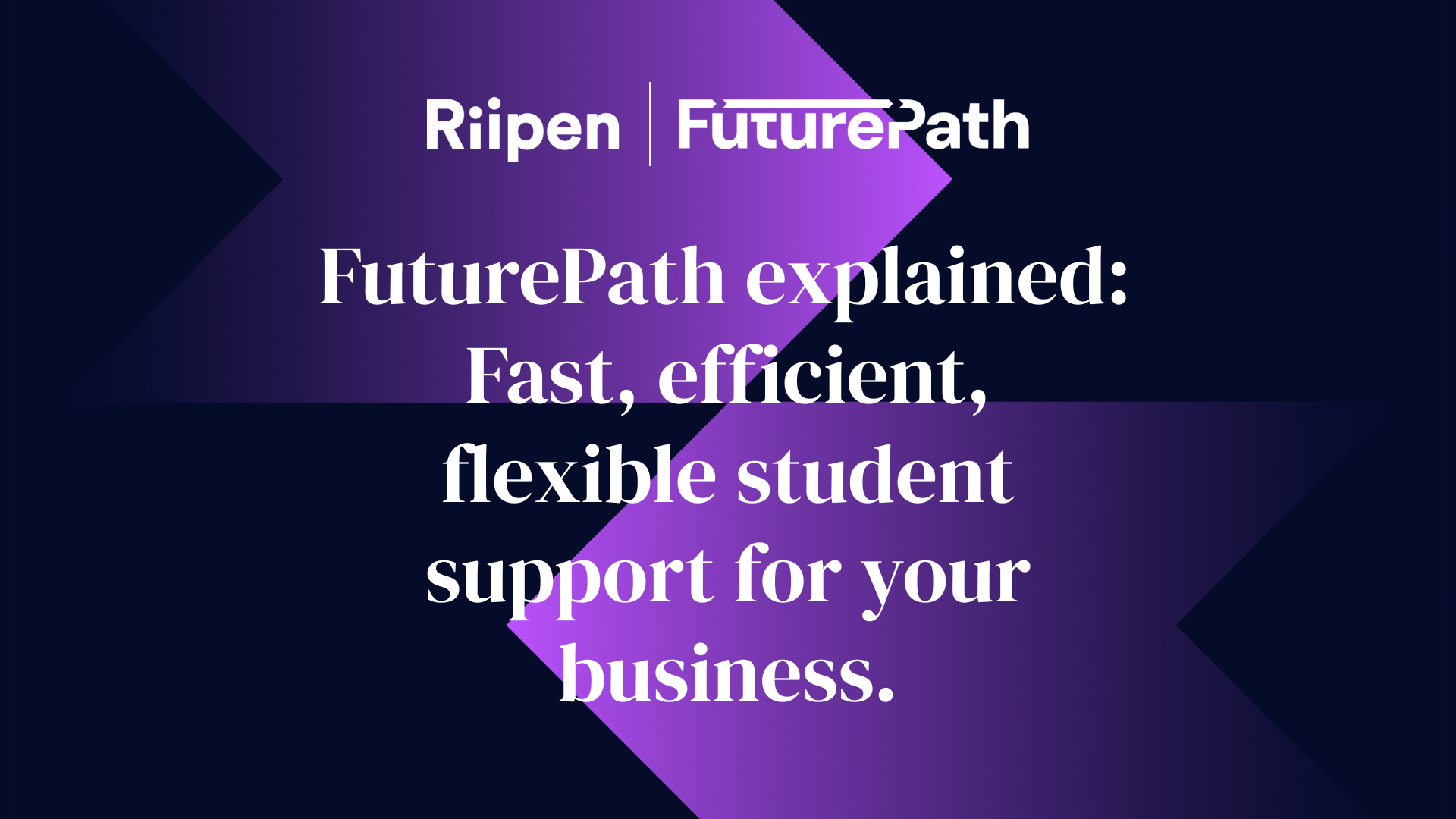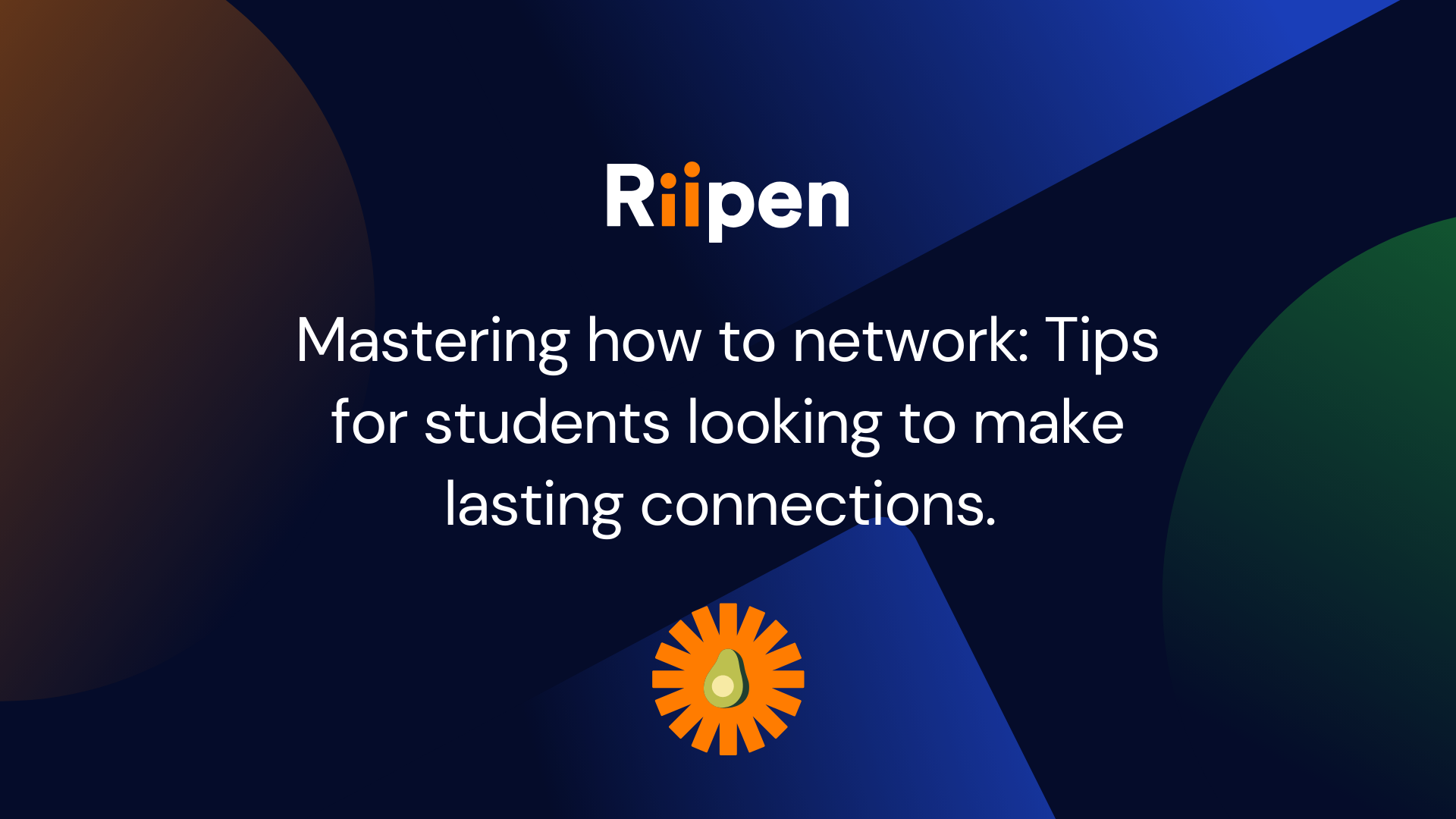5 proven experiential learning activities to captivate college students

Ever wondered why some graduates step into the professional world with unparalleled confidence while others struggle to connect their academic knowledge to real-world applications? The distinction often lies in the teaching methodologies adopted.
From engaging with authentic business projects to immersing oneself in role-plays that reflect societal issues, experiential learning is breaking the barriers of traditional education and giving students the experience they need to succeed once they walk off that stage.
Let's explore the five game-changing activities that are transforming how students learn and preparing them for the world beyond textbooks.
{{key-takeaways}}
1. Riipen courses and projects
Educators are always on the hunt for ways to make their curriculum more relevant and dynamic, and Riipen has emerged as a frontrunner in revolutionizing experiential learning within higher education settings.
With access to over 31,000 businesses and nonprofits, Riipen's innovative platform connects educators, students, and organizations for real-world project-based learning.

Students have the opportunity to:
- Engage directly with businesses and nonprofits, granting them a first-hand experience of the professional environment.
- Move beyond academic exercises to solve genuine business challenges, which boosts confidence and provides a practical application of their theoretical knowledge.
- Gain both hard and soft skills tailored to real-world needs, from project management to effective communication, making them job-ready.
- Build a professional network by working closely with industry professionals.
- Receive diverse feedback not just from educators but also from professionals in their field, enabling well-rounded growth.
Higher educational institutions gain the ability to:
- Access a vast array of authentic projects, ensuring the curriculum is up-to-date and aligned with current industry demands, while also promoting equitable and real-world learning experiences for all students.
- Forge and extend industry partnerships with professionals and gain more in-depth industry insights.
- Improve both educational and employment outcomes by facilitating hands-on experiences that enhance academic performance, course retention, and employment readiness.
- Integrate career readiness directly into the curriculum, equipping students for success in the professional realm even before they graduate.
- Continuously improve and refine their approach and course structure thanks to the feedback loop from both students and industry partners.
- Draw upon strong research evidence to advocate for the transformative impact of experiential learning, which significantly improves course performance, completion rates, and degree attainment.
To learn more about Riipen's courses and projects, reach out to one of their experienced team members.
2. Internships
Internships have stood the test of time as an invaluable experiential learning tool, offering students a tangible taste of the professional arena. However, while they have been a popular and persistent method over decades, there are growing concerns about their decline in availability and questions regarding their equity as a solution.
They offer students the chance to:
- Immerse themselves in the day-to-day operations of the professional realm, experiencing the rhythms, challenges, and innovations of a working environment.
- Allow students to apply academic learning in real-world scenarios, testing and refining their skills.
- Get acquainted with workplace etiquette, team dynamics, client interactions, and more.
- Establish a robust professional network, setting the stage for future collaborations, recommendations, and job opportunities.
The benefits of facilitating internships extend to educators and institutions as well. They get to:
- Strengthen relationships with key industry players, fostering deeper ties and collaborative opportunities with employers.
- Enhance the institution's standing, showcasing a commitment to real-world education and attracting top-tier students.
- Meet crucial accreditation benchmarks, ensuring institutional standards remain high and are recognized by accrediting bodies.
- Provide fertile ground for faculty exploration, tapping into internships as a rich source of research data and academic insights.
3. Simulations
From digital platforms that recreate business scenarios to hands-on labs that simulate scientific experiments, simulations are structured activities that mimic real-world situations in a controlled environment. They allow learners to experience and adapt to real-world scenarios in a low-risk environment.
These dynamic scenarios allow students to:
- Experiment and even make mistakes without real-world consequences.
- Experiencing situations first-hand, gaining a deeper understanding and appreciation of intricate real-world dynamics.
- Refine debating, research, strategic thinking, and teamwork skills.
- Facilitate the translation of classroom-acquired knowledge into practical scenarios.
While simulations demand resources and time for effective implementation, educators and higher education institutions find immense value in incorporating them into curriculums, such as:
- Having the ability to tailor simulations to cater to different learning levels, ensuring adaptability and inclusivity.
- Gaining valuable insights into students' decision-making processes, aiding in feedback and future instructional design.
- Attracting and retaining ambitious and forward-thinking students, boosting the institution's overall reputation and appeal.
- Delivering dynamic and engaging content while collecting valuable data to fuel academic research.
4. Role plays
As the name implies, role-playing immerses students directly into real-world scenarios, requiring them to act out situations and assume character roles.
These scenarios can either mirror real-life events or be meticulously crafted to elicit certain reactions or decisions. As students navigate through these situations, the classroom transforms into a dynamic arena of active participation, decision-making, and reflection.
By living out a character's narrative, students get to:
- See the world through a different lens, leading to a profound understanding and compassion for various perspectives.
- Sharpen communication skills.
- Refine interpersonal skills, including negotiation and conflict resolution.
From an educator's and institution's perspective, role plays provide:
- A deviation from the traditional lecture format, rejuvenating the classroom atmosphere and boosting engagement.
- With a versatile teaching method that can be applied to almost any academic subject.
- A unique opportunity to assess decision-making and interpersonal skills.
5. Case studies
Case studies often present students with real or hypothetical situations related to their field of study, asking them to analyze the situation, identify problems or opportunities, and propose solutions based on their understanding.
This format encourages students to:
- Dissect complex problems and devise solutions to hone their analytical and problem-solving skills.
- Prepare them for similar challenges in real-world careers.
- Cultivate critical thinking, prompting them to assess and evaluate multiple facets of a situation.
For educators and higher education institutions, case studies:
- Enhance the quality of teaching by offering real-world applications of theoretical knowledge to make abstract concepts more tangible for students.
- Offer an effective assessment tool to gauge students' comprehension, analytical abilities, and problem-solving prowess.
- Foster active student engagement, leading to a richer learning experience and deeper understanding.
Join the #1 experiential learning platform in the world
The activities described above are great ways to bridge the gap between theoretical knowledge and practical application. But it's important to note that experiential learning complements traditional teaching methods and holds significant promise for the evolving landscape of education.
With the need for learners to become more prepared for life outside the classroom increasing, platforms like Riipen stand out as beacons, guiding institutions toward academic excellence and genuine real-world readiness.
As the world's largest experiential learning marketplace, Riipen makes it easy to seamlessly integrate real-world, work-based projects into the curriculum. Here's how:
- Unparalleled connections: By connecting higher education institutions with over 31,000 businesses and nonprofits, Riipen creates a vibrant learning ecosystem that makes collaboration easier than ever.
- Streamlined integration: With features like intuitive matchmaking and templates, integrating real-world, work-based projects into curriculums is effortless.
- Feedback and growth: The platform doesn't stop at just project completion. Through its unique feedback mechanisms, students continuously learn, adapt, and grow, refining their skills based on professional feedback.
- Optimizing the learning experience: Riipen's dashboard and detailed reporting help educators fine-tune their approach, ensuring students are industry-ready at all times.

With Riipen, colleges and universities can enrich their experiential learning methods. The goal is to provide students with more than just textbook knowledge; it's about preparing them for the diverse challenges they'll face beyond graduation.
{{inline-cta}}

Key takeaways
- The future of education leans heavily towards hands-on, practical experiences.
- Experiential learning is a transformative approach in higher education, bridging the gap between theoretical knowledge and real-world application.
- Activities such as real-world projects via Riipen, internships, simulations, role plays, and case studies not only enhance student engagement but also prepare them for success outside the confines of the classroom.



If you're an educator looking to take your curriculum to the next level, it might be worth seeing what Riipen has to offer. Schedule a demo.








.png)


.png)














.png)








